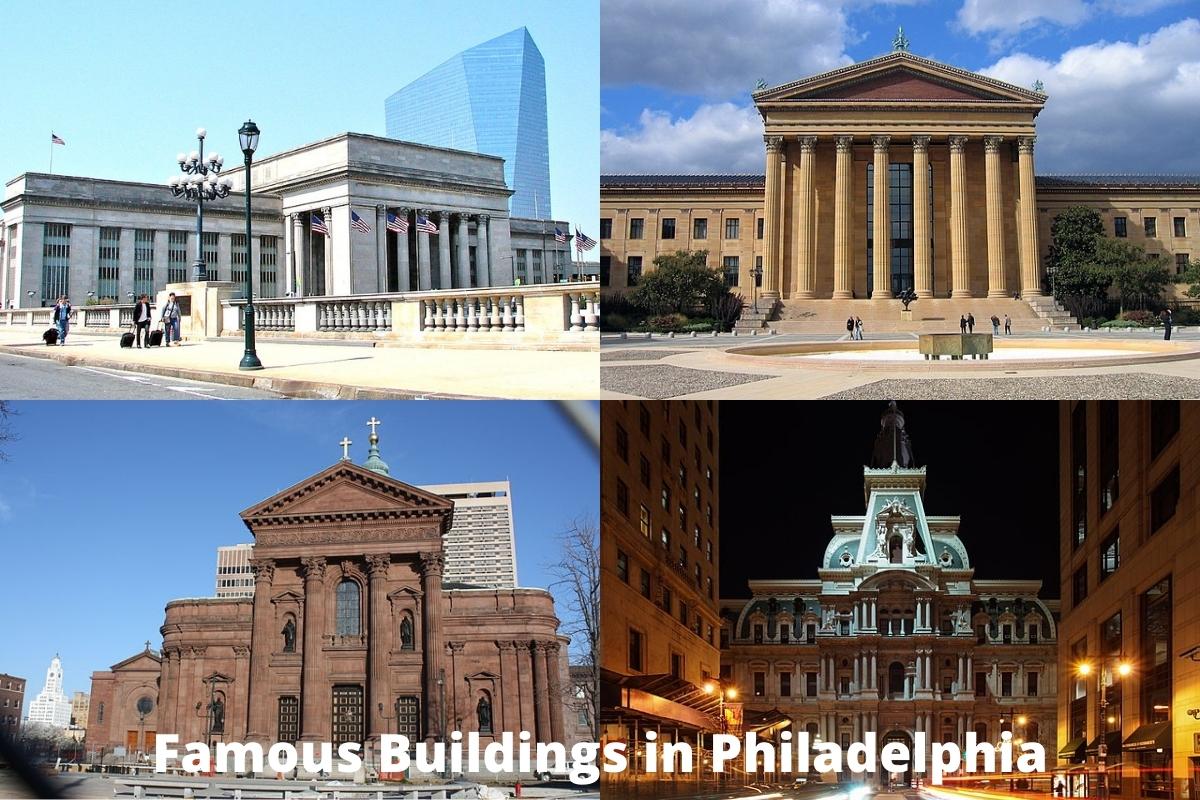From historic buildings, notable landmarks and sleek skyscrapers, Philadelphia is a study of the evolution of American architecture.
In Philadelphia, the past is preserved, history is honored, and the indelible spirit of its founders inspires — all evident throughout the structures and skyline of the city.
Let’s take a look at some of the architectural wonders that reside in the “Birthplace of America”, and the architects, styles, and stories that make them uniquely Philadelphian.
Famous Buildings in Philadelphia
1. Christ Church
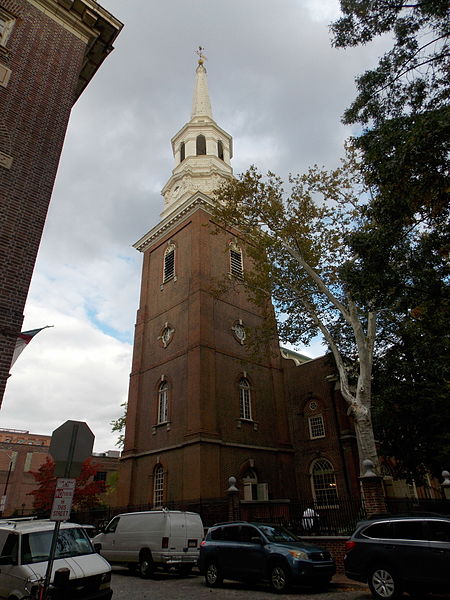
Located in the Old City neighborhood of Philadelphia, Christ Church has stood tall over the Delaware River since it was erected in 1695.
The gorgeously appointed church is a culmination of colonial craftsmanship and Georgian architecture, its classic facade juxtaposed against graceful, arched windows and interior highlighted by traditional pews and striking, fluted columns.
Also Read: Landmarks in Pennsylvania
The church served as a hub during the Revolutionary era; its members included George Washington, Robert Morris, Benjamin Franklin, and Betsy Ross.
Today, plaques are placed in pews commemorating where the historical icons sat and worshiped. Now designated as a National Historical Landmark, Christ Church welcomes over 250,000 visitors a year.
2. Eastern State Penitentiary
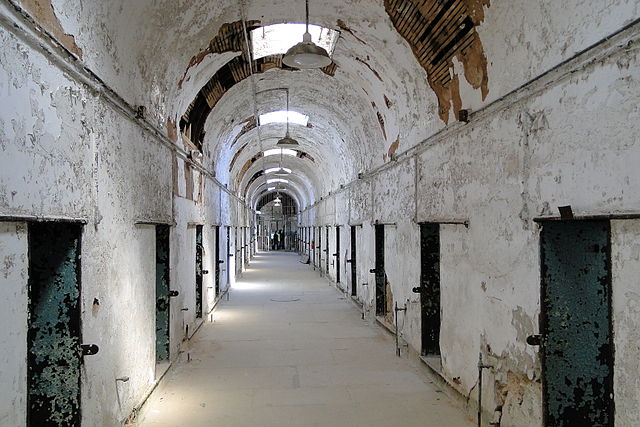
Philadelphia is home to one of the most famous prisons in the world: Eastern State Penitentiary. The looming, castle-like Gothic architecture cuts an ominous figure against the Pennsylvania sky.
The world’s first true penitentiary, Eastern State was designed by prison architect John Haviland. Haviland was inspired by the prisons and asylums of England and Ireland, known for exteriors that would strike fear into the most hardened criminal.
Eastern State was home to some of the most renowned criminals of the era; Al Capone, bank robber Willie Sutton, and Big Joe Bruno were held within the stone walls.
The penitentiary closed its doors in 1917 and has since been named a National Historic Landmark.
Today, thrill seekers, ghost hunters, and other curious individuals flock to the penitentiary each year for “Terror Behind the Walls”, one of the area’s most anticipated haunted attractions. Take a tour and see for yourself…if you dare.
3. Philadelphia City Hall
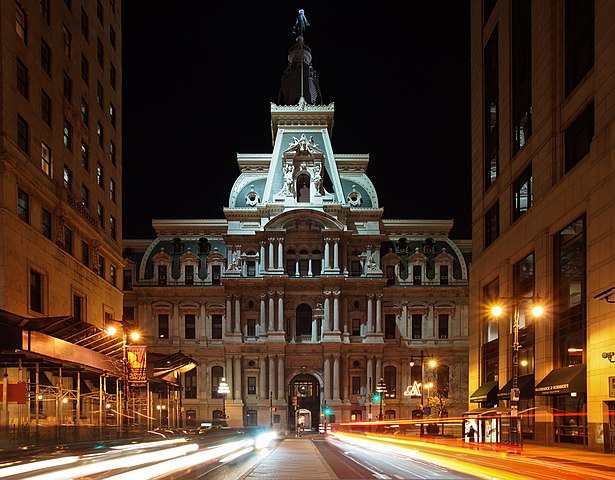
The largest municipal building in the country, Philadelphia City Hall is a mammoth of a structure covering over 14.5 acres of floor space. The structure was conceived by William Penn and took 30 years to finish, costing about $24 million by the time of completion.
The building was designed in the Second Empire style, reminiscent of the architecture during Napoleon’s reign in France during the mid to late 1800s.
The masonry building is made of limestone, granite, and marble, and the exterior is adorned with intricate sculptures representing the seasons, along with figures, heads, and masks. The pièce de résistance is a 27-ton statue of William Penn that sits atop the tower, overlooking the expanses of the city.
The architectural treasure is the seat of the municipal government, courthouse, and home to the mayor and city council of Philadelphia. An observation deck sits inside a glass enclosure, offering a sweeping view of Philly.
At the foot of City Hall sits Dilworth Park, which transforms each winter and brings droves of visitors and residents to enjoy its ice skating rink, seasonal garden, and holiday market.
4. Philadelphia Museum of Art
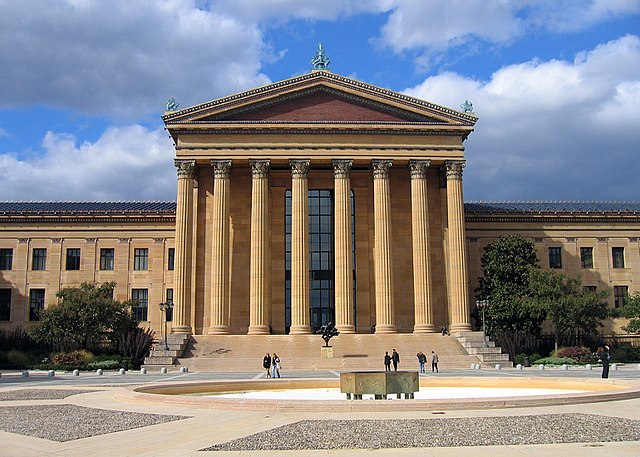
The cultural heart of the city, the iconic Philadelphia Museum of Art is one of the largest art museums in the world and a can’t-miss attraction for visitors to the city.
Immortalized by Rocky Balboa, the steps to the Museum of Art are cemented in cinematic history, his triumphant ascent to the top oft-duplicated by visitors and guests.
The museum was founded during the nation’s first centennial in 1876 and was completed in 1928. Three Greek temple-like buildings link together to form the museum, inspired by chief designer Julian Abele’s travels to Greece.
Inside, the museum’s art collection is astounding; over 240,000 pieces spanning from ancient Rome to modern day. Rotating exhibitions, an outdoor sculpture garden, and a newly added store and espresso bar are just some of the features that make the museum a thrill to discover.
5. Independence Hall
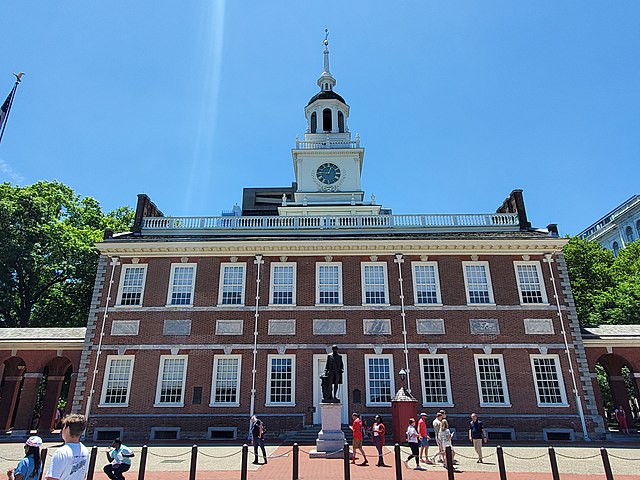
The foundation of America exists within Independence Hall, the birthplace of the Declaration of Independence and the Constitution.
Designated as a UNESCO World Heritage Site, Independence Hall consists of a Georgian-style central building with a bell tower and steeple, flanked by two wings.
The red brick State House was designed by Edmund Woolley and Andrew Hamilton, while the bell tower clock was completed by Thomas Stretch and the steeple was designed by William Strickland.
The entire property makes up Independence Square, which is also home to the Liberty Bell, a symbol of the city.
6. 30th Street Station
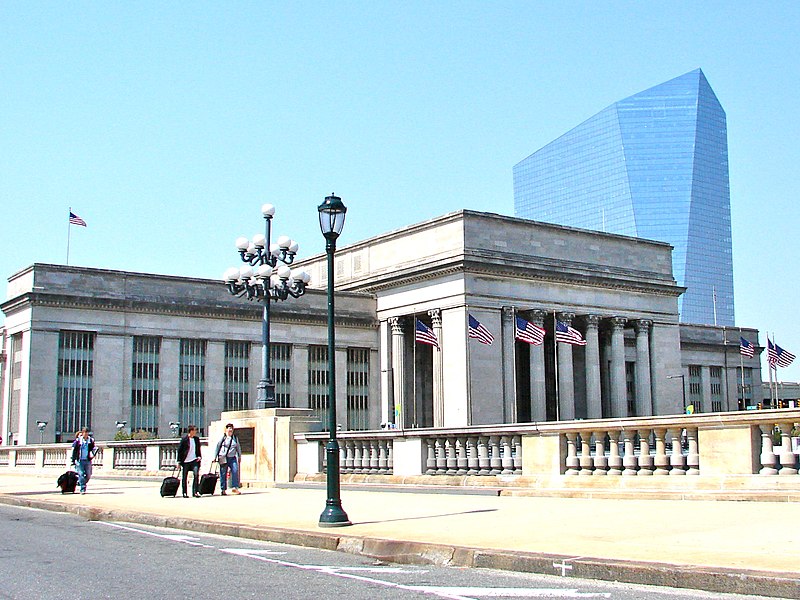
With its expansive concourse and stunning works of art, 30th Street Station is as much of a major transportation hub as a cultural one.
Philadelphia’s main railway station is one of America’s busiest, serving the Northeast corridor and transporting over four million passengers each year.
The station design was ahead of its time: features include a tube system with an intercom system, a landing strip for an airplane, a mortuary, chapel, and medical center.
If you think you’ve seen 30th Street Station before, you’re probably right — the Amtrak gem has been featured in several films and television shows, including Unbreakable, The Happening, Agents of S.H.I.E.L.D., and It’s Always Sunny in Philadelphia.
7. Vanna Venturi House
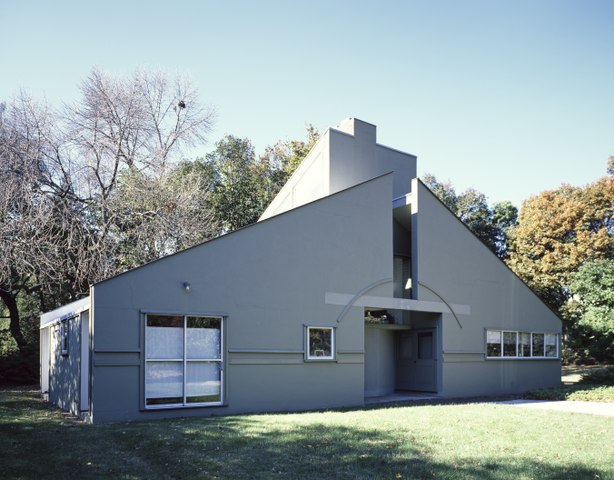
Designed by Robert Venturi for his mother Vanna, the Chestnut Hill home is one of the first prominent works of postmodern architecture in America.
Tasked with building a home for his mother, the young architect was eager to accept the challenge. The conditions: Mrs. Venturi wanted a simple and unpretentious home, with most rooms on one level.
No timeline, no rigid details. Venturi began the design process in the late 1950s and by 1964, the architectural icon was complete.
The Venturi house utilizes classic exterior elements like a gabled roof and arched entry, but strips them of their typical functions. Inside, five rooms are arranged around a combined hearth and staircase, the center of the home.
In 1989 the home was awarded the American Institute of Architects’ prestigious Twenty-Five Year Award for standing the test of time. Since then, the home has been celebrated in everything from museum displays to postage stamps.
8. Pennsylvania Academy of the Fine Arts
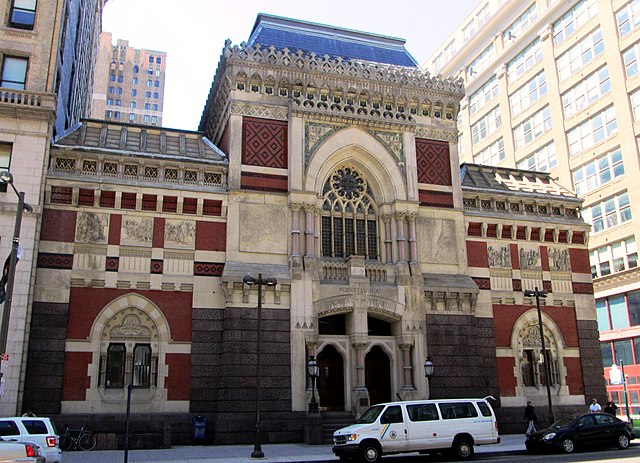
Founded in 1805, the dual-purpose facility is known for its collection of American artwork from the 19th and 20th centuries, and on the scholarly side, for art training and materials on the study of American art history and museums.
The current building opened in 1876 for the Philadelphia Centennial. A one-of-a-kind structure, the exterior is a confluence of architectural styles, including Second Empire, Renaissance Revival, and Gothic Revival.
The facade is a combination of materials like brownstone, sandstone, polished pink granite, red brick, and terra cotta. The interior is as inspired; bold hues of plum, ochre, olive, and cerulean are accented by playful gilded patterns.
Designers Frank Furness and George Hewitt were the men behind the project, which some called “one of the most magnificent Victorian buildings in the country.”
9. Comcast Center
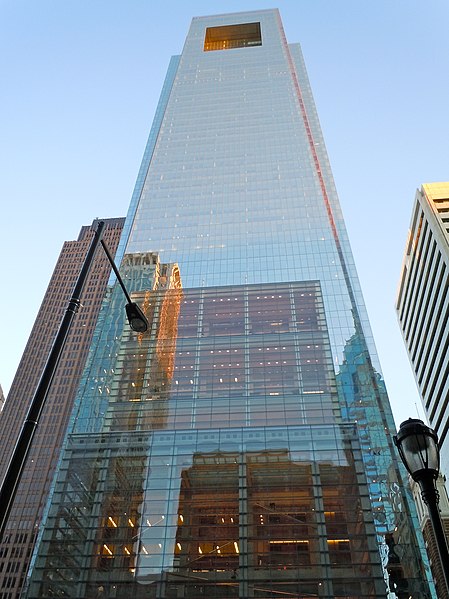
Towering over Philadelphia, the Comcast Center reached its final form after a redesign in 2005. The behemoth measures 974 feet tall, with 58 floors that are predominantly occupied by its namesake, Comcast.
One of the most efficient buildings in North America, the Comcast Center received a gold Leadership in Energy and Environmental Design rating, and the recognition is well-deserved.
The building was designed to use 40 percent less water than its counterparts, while the exterior’s low-emissive glass curtain blocks 60 percent of heat and allows 70 percent of sunlight.
It’s also more functional than traditional office space, thanks to a connection to Suburban Station, one of Philly’s underground commuter rail lines.
The Comcast Center’s winter garden displays works of art including a giant, high-definition LED screen that shows views of the city’s historic sites and clips of space, dancers, and acrobats — in short, there is always something to behold.
10. Cathedral Basilica of Saints Peter and Paul
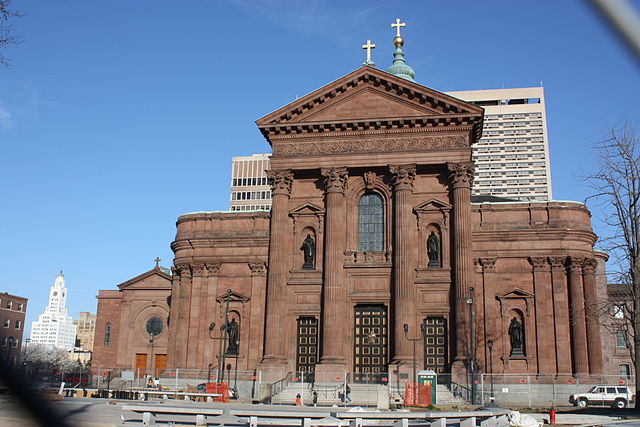
Mother church of the Archdiocese of Philadelphia, the Cathedral Basilica of Saints Peter and Paul stands as the largest Catholic church in the state.
Built between 1846 and 1864, the cathedral was named in the U.S. National Register of Historic Places in 1971 and has hosted two papal visits, from Pope John Paul II (1979) and Pope Francis in 2015.
Throughout its lengthy construction, the project changed hands several times. The original design came courtesy of Napoleon LeBrun, and the interior was styled by the artist Constantino Brumidi (who painted the ceiling mural and portraits throughout the cathedral).
Inspired by the Lombard Church of St. Charles in Rome, the basilica is breathtakingly beautiful; its Palladian facade and copper dome are reflective of Italian Renaissance influences.
Inside, red antique marble, stained glass windows, marble columns, and murals again harken back to Roman influences. Fitting, as the apostles Peter and Paul share a feast day as founders of the church in Rome.

